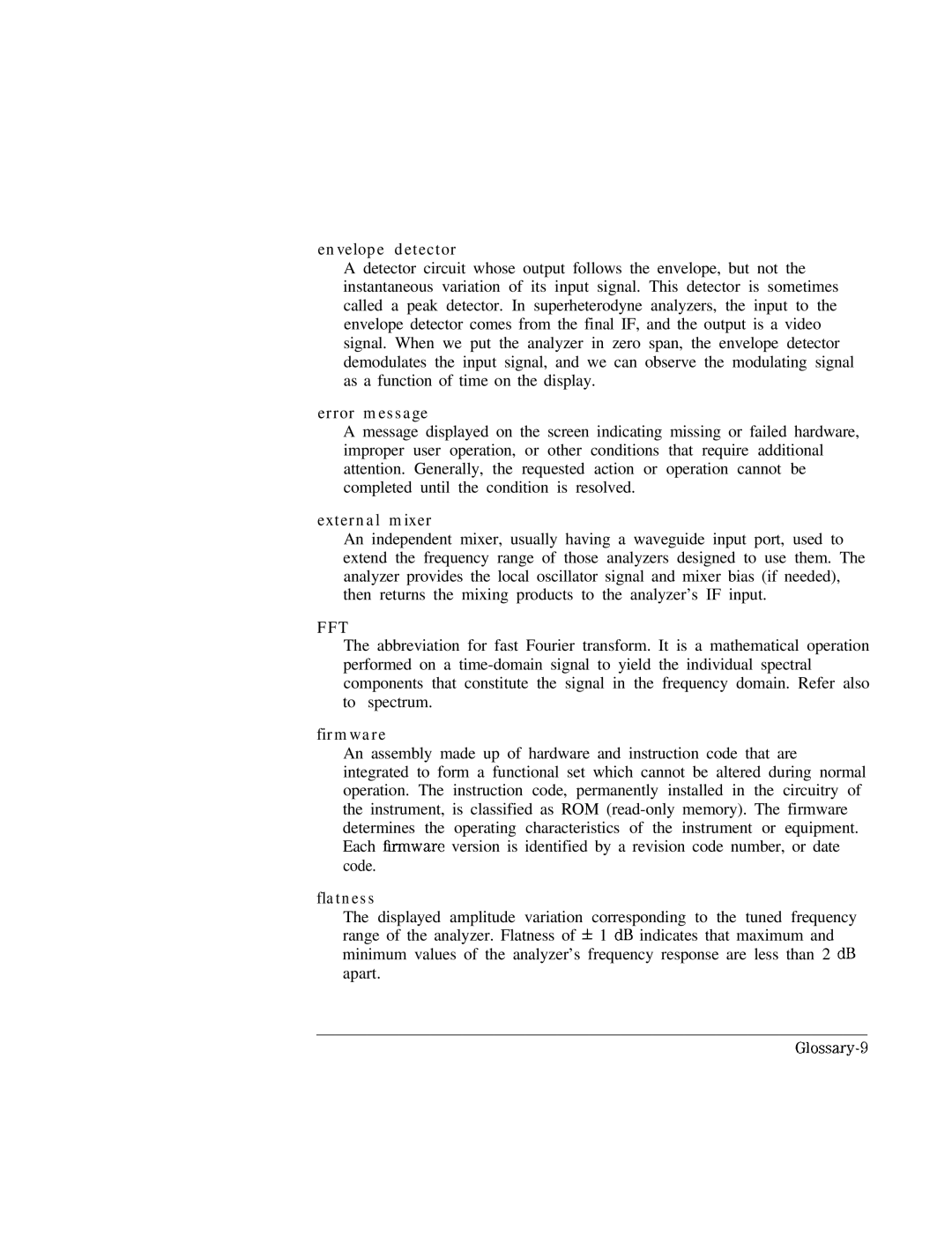
envelope detector
A detector circuit whose output follows the envelope, but not the instantaneous variation of its input signal. This detector is sometimes called a peak detector. In superheterodyne analyzers, the input to the envelope detector comes from the final IF, and the output is a video signal. When we put the analyzer in zero span, the envelope detector demodulates the input signal, and we can observe the modulating signal as a function of time on the display.
error message
A message displayed on the screen indicating missing or failed hardware, improper user operation, or other conditions that require additional attention. Generally, the requested action or operation cannot be completed until the condition is resolved.
external mixer
An independent mixer, usually having a waveguide input port, used to extend the frequency range of those analyzers designed to use them. The analyzer provides the local oscillator signal and mixer bias (if needed), then returns the mixing products to the analyzer’s IF input.
FFT
The abbreviation for fast Fourier transform. It is a mathematical operation performed on a
firmware
An assembly made up of hardware and instruction code that are integrated to form a functional set which cannot be altered during normal operation. The instruction code, permanently installed in the circuitry of the instrument, is classified as ROM
flatness
The displayed amplitude variation corresponding to the tuned frequency range of the analyzer. Flatness of f 1 dB indicates that maximum and minimum values of the analyzer’s frequency response are less than 2 dB apart.
